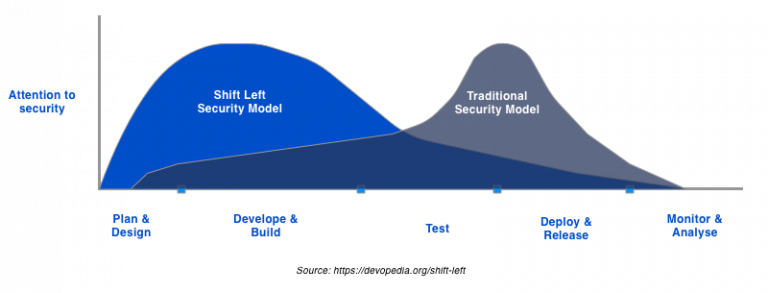Containerization has revolutionized how applications are deployed and managed in modern IT environments. By encapsulating applications and their dependencies into isolated units, containers offer a level of portability and consistency that was previously difficult to achieve. However, with the rise in container adoption, the focus on container security has become increasingly critical.
Understanding and addressing container security vulnerabilities is essential for maintaining the integrity and security of containerized applications. These vulnerabilities can stem from various sources, including outdated base images, misconfigured settings, and network threats. Effective container vulnerability management is crucial to safeguarding your systems against potential exploits.
In this article, we’ll dive into the common vulnerabilities found in container environments, drawing on Iterasec extensive cybersecurity expertise. We’ll explore image vulnerabilities, misconfigurations, network threats, runtime security issues, and supply chain attacks. We’ll also look at advanced threat scenarios and provide best practices for securing container environments. We will provide you with a comprehensive understanding of how to assess and mitigate container vulnerabilities, ensuring a robust security posture for your containerized applications.
Common Container Security Vulnerabilities
Now, let’s dive deep into the most common container security vulnerabilities and explore how a comprehensive container vulnerability assessment can help identify and mitigate these risks effectively:
Image Vulnerabilities
Use of Outdated and Unpatched Base Images
Using outdated or unpatched base images is a common container vulnerability. These images may contain known security flaws that can be exploited by attackers. Regularly update base images to include the latest security patches and improvements.
Inclusion of Malicious or Vulnerable Software in Images
The inclusion of malicious or vulnerable software within container images poses significant risks. This can happen when images are built from untrusted sources or when dependencies are not properly vetted. Mitigate this risk by using trusted repositories and performing thorough scans on all components of an image to prevent container vulnerabilities.
Strategies for Ensuring Image Integrity
- Signing Images: Use Docker Content Trust (DCT) to sign container images, ensuring they have not been tampered with and come from a trusted source.
- Using Trusted Repositories: Always pull images from trusted repositories and official sources to reduce the risk of incorporating malicious or vulnerable components.
- Regular Scanning: Implement regular vulnerability scanning for base images and application layers using automated tools to prevent container vulnerabilities.
- Immutable Infrastructure: Adopt an immutable infrastructure approach where images are never modified after deployment. Instead, build, test, and deploy new images to ensure consistency and security.
Misconfigured Container Settings
Insecure Default Configurations
Containers often come with default configurations prioritizing ease of use over security, leading to potential container vulnerabilities. Review and adjust these settings to enhance security.
Excessive Privileges and Capabilities
Running containers with excessive privileges – such as the root user – can lead to significant security risks. If an attacker gains control of a container with root privileges, they can break out of the container and access the host system. To mitigate this risk, run containers with the minimum necessary privileges using the principle of least privilege.
Techniques for Hardening Container Configurations
- Run as Non-Root: Always run containers as a non-root user whenever possible.
- Capability Management: Use the ‘–cap-drop’ and ‘–cap-add’ options in Docker to remove unnecessary capabilities from containers.
- Read-Only File Systems: Configure containers with read-only file systems to prevent unauthorized changes.
- Limit Resource Usage: Set CPU and memory limits to prevent resource exhaustion attacks.
- Use Security Profiles: Implement security profiles to restrict the system calls containers can make.
Network Threats
Insufficient Network Isolation
Without proper network segmentation, containers can communicate with each other without restriction, increasing the risk of lateral movement by an attacker who has compromised one container. Implement network segmentation to isolate containers and reduce the attack surface.
Vulnerabilities in Container Network Interfaces
Containers often use virtual network interfaces to communicate, and these interfaces can introduce vulnerabilities if not properly configured. Weak or default network configurations can be exploited to intercept or manipulate traffic.
Best Practices for Secure Container Networking
- Network Policies: Implement network policies to control traffic between containers. In Kubernetes, network policies can define which pods are allowed to communicate with each other, reducing unnecessary exposure.
- Service Meshes: Use service meshes to manage and secure inter-service communication. These provide features like mutual TLS, traffic encryption, and observability.
- Isolation: Use network namespaces to isolate container networks. It prevents containers from directly accessing the host network and other container networks unless explicitly permitted.
- Firewalls and VPNs: Configure firewalls and virtual private networks (VPNs) to protect communication between containers, especially when dealing with sensitive data or inter-cluster communication.
Runtime Security Issues
Resource Constraints and Isolation
Properly configuring resource constraints and isolation mechanisms is essential for preventing resource exhaustion and ensuring that containers do not interfere with each other.
- Cgroups and Namespaces: Use cgroups (control groups) to limit the resources (CPU, memory, I/O) containers can consume. Namespaces provide isolation for various aspects of a container’s environment, such as process IDs, network, and file systems.
Exploiting Container Runtime Vulnerabilities
Vulnerabilities in container runtimes like Docker or containerd can be exploited by attackers to escape from a container and gain access to the host system. Regularly updating and patching container runtimes is crucial to mitigate these risks.
Fortify your containers against vulnerabilities — contact us for expert cybersecurity guidance.
Real-Time Monitoring and Protection Strategies
- Security Tools: Use tools to monitor container activity and detect abnormal behavior in real time. These tools can alert administrators to potential security incidents, enabling a quick response.
- Automated Incident Response: Develop and implement automated incident response procedures to handle security incidents efficiently. Automation can help contain breaches and mitigate damage more quickly than manual intervention.
Supply Chain Attacks
Dependency Vulnerabilities in Container Images
Container images often include numerous dependencies, each of which can introduce vulnerabilities. It’s essential to scan these dependencies regularly to identify and address potential security issues.
Compromise in Third-Party Libraries and Tools
Using third-party libraries and tools can introduce risks if these components are compromised. Ensuring that all third-party software is sourced from reputable vendors and regularly updated is crucial for maintaining security.
Measures to Secure the Container Supply Chain
- Dependency Scanning: Use tools to scan container images for vulnerable dependencies.
- Software Bill of Materials (SBOM): Maintain an SBOM to have a clear inventory of all components within your container images. It helps in tracking and managing dependencies.
- Vendor Management: Regularly evaluate the security practices of third-party vendors and ensure they adhere to industry standards.
- Continuous Monitoring: Implement continuous monitoring of the supply chain to detect and respond to any compromises swiftly.
Advanced Threats and Attack Scenarios
Examining real-world container security breaches provides valuable insights into how advanced threats manifest and the impact they can have on organizations. Here are a few notable examples case studies for container security breaches:
- Tesla Kubernetes Cluster Breach
In 2018, Tesla’s Kubernetes cluster was compromised by attackers who gained access through an unprotected console. The attackers exploited the cluster to mine cryptocurrency, which consumed significant computing resources and potentially exposed sensitive data.
- Docker Hub Credential Leak
In 2019, Docker Hub, a popular repository for container images, experienced a security breach that exposed sensitive information, including user data and access tokens. This incident highlighted the risks associated with using third-party repositories without adequate security measures.
- Capital One Data Breach
The Capital One data breach in 2019 involved a misconfigured web application firewall on a cloud server. While not exclusively a container breach, the incident underscores the importance of secure configurations and regular security reviews in cloud-native environments.
Analysis of Advanced Attack Techniques
Container Escape
Container escape is a technique where an attacker breaks out of a container to execute code on the host system. It can happen due to vulnerabilities in the container runtime or misconfigurations that grant excessive privileges.
Example: RunC Vulnerability
A critical vulnerability in RunC, the default container runtime for Docker and Kubernetes, allowed attackers to execute arbitrary code on the host system by exploiting a flaw in the way RunC handled certain system calls. Patching and timely updates are essential to mitigate such risks.
Cross-Container Attacks
Cross-container attacks involve compromising one container to launch attacks on other containers within the same environment. It can be achieved through network vulnerabilities or shared resources.
Example: Kubernetes API Server Exploit
An attacker might exploit a vulnerability in the Kubernetes API server to gain unauthorized access to multiple containers in the cluster. Implementing strict network policies and regular vulnerability assessments can help prevent such exploits.
Don't let container vulnerabilities compromise your operations — reach out to our cybersecurity specialists.
Impact Assessment and Lessons Learned from These Breaches
Impact Assessment
- Resource Exhaustion: Attacks like cryptocurrency mining can lead to significant resource consumption, affecting the performance and availability of legitimate services.
- Data Exposure: Breaches can expose sensitive data, leading to financial loss, reputational damage, and legal consequences.
- Operational Disruption: Security incidents can disrupt operations, requiring significant time and resources to investigate and remediate.
Lessons Learned
- Regular Security Audits: Conduct regular security audits and vulnerability assessments to identify and address potential weaknesses in your container environments to prevent critical container security vulnerabilities.
- Timely Patching and Updates: Ensure that all container runtimes, orchestration tools, and dependencies are kept up to date with the latest security patches.
- Secure Configurations: Implement best practices for secure configurations, including the principle of least privilege, network segmentation, and resource constraints.
- Monitoring and Incident Response: Establish robust monitoring and incident response procedures to detect and respond to security incidents quickly and effectively.
Best Practices for Securing Container Environments
Let’s explore best practices for securing container environments to mitigate container security vulnerabilities that might occur:
Shift-Left Security
Shift-left security involves integrating security practices early in the development rather than treating security as an afterthought. This proactive approach helps identify and mitigate vulnerabilities before they make it into production. Here are several tools and techniques for early vulnerability detection:
- Static Application Security Testing (SAST): SAST tools analyze source code for vulnerabilities during development.
- Dynamic Application Security Testing (DAST): DAST tools simulate attacks on running applications to identify security flaws.
- Container Scanning: Integrate container scanning tools into your CI/CD pipeline to detect vulnerabilities in container images before they are deployed.
Effective logging and monitoring are crucial for detecting and responding to security incidents in real time. Implementing these measures helps maintain visibility into container activities and identify abnormal behaviors.
- Centralized Logging: Use centralized logging solutions like to aggregate and analyze logs from all containers.
- Real-Time Monitoring: Deploy monitoring tools to track container performance and detect anomalies. Security-focused monitoring tools like Falco can provide real-time alerts for suspicious activities.
Automated Incident Response and Threat Mitigation
Automating incident response processes helps contain and mitigate threats quickly, reducing the potential impact of security incidents.
- Automated Remediation: Use tools like Kubernetes operators or serverless functions to automate remediation actions, such as isolating compromised containers or scaling resources.
- Threat Intelligence: Integrate threat intelligence feeds to stay informed about emerging threats and adjust security measures accordingly.
Network Security Enhancements
Network policies control the traffic between containers, limiting exposure and reducing the risk of lateral movement by attackers.
- Kubernetes Network Policies: Define and enforce network policies in Kubernetes to restrict communication between pods based on namespaces, labels, and other criteria.
- Microsegmentation: Use micro-segmentation techniques to create isolated network segments for different container workloads, enhancing security and reducing the attack surface.
Securing communication between containers and external systems is critical to protect data in transit.
- Mutual TLS: Implement mutual TLS (mTLS) to ensure that communication between services is authenticated and encrypted. Service meshes like Istio and Linkerd can facilitate mTLS implementation.
- Data Encryption: Use encryption protocols like TLS for data in transit and encrypt sensitive data at rest to protect it from unauthorized access.
Compliance and Governance
Following industry standards and best practices helps ensure your container environments meet security requirements and are resilient against known threats.
- CIS Benchmarks: Implement the Center for Internet Security (CIS) benchmarks for Docker and Kubernetes to establish a strong security baseline.
- NIST Guidelines: Follow the National Institute of Standards and Technology (NIST) guidelines for container security, including recommendations for container hardening and secure deployment that help prevent most common container vulnerabilities.
It is essential to conduct regular security audits and vulnerability assessments to identify and remediate security gaps.
- Penetration Testing: Perform regular penetration testing to simulate attacks and uncover vulnerabilities in containerized environments.
- Compliance Audits: Ensure compliance with relevant regulations and standards by conducting regular audits and assessments.
Conclusion
In this article, we explored various container security vulnerabilities, such as outdated base images, malicious software, misconfigurations, insufficient network isolation, runtime security issues, and supply chain attacks. Addressing these through hardening configurations, enforcing network policies, and implementing robust monitoring is crucial.
To effectively address these vulnerabilities, a proactive security strategy is essential. By integrating security into the development pipeline (Shift-Left Security), adopting runtime security measures, enhancing network security, and following industry standards, organizations can significantly reduce risks. Contact Iterasec for expert guidance on securing your container environments.



